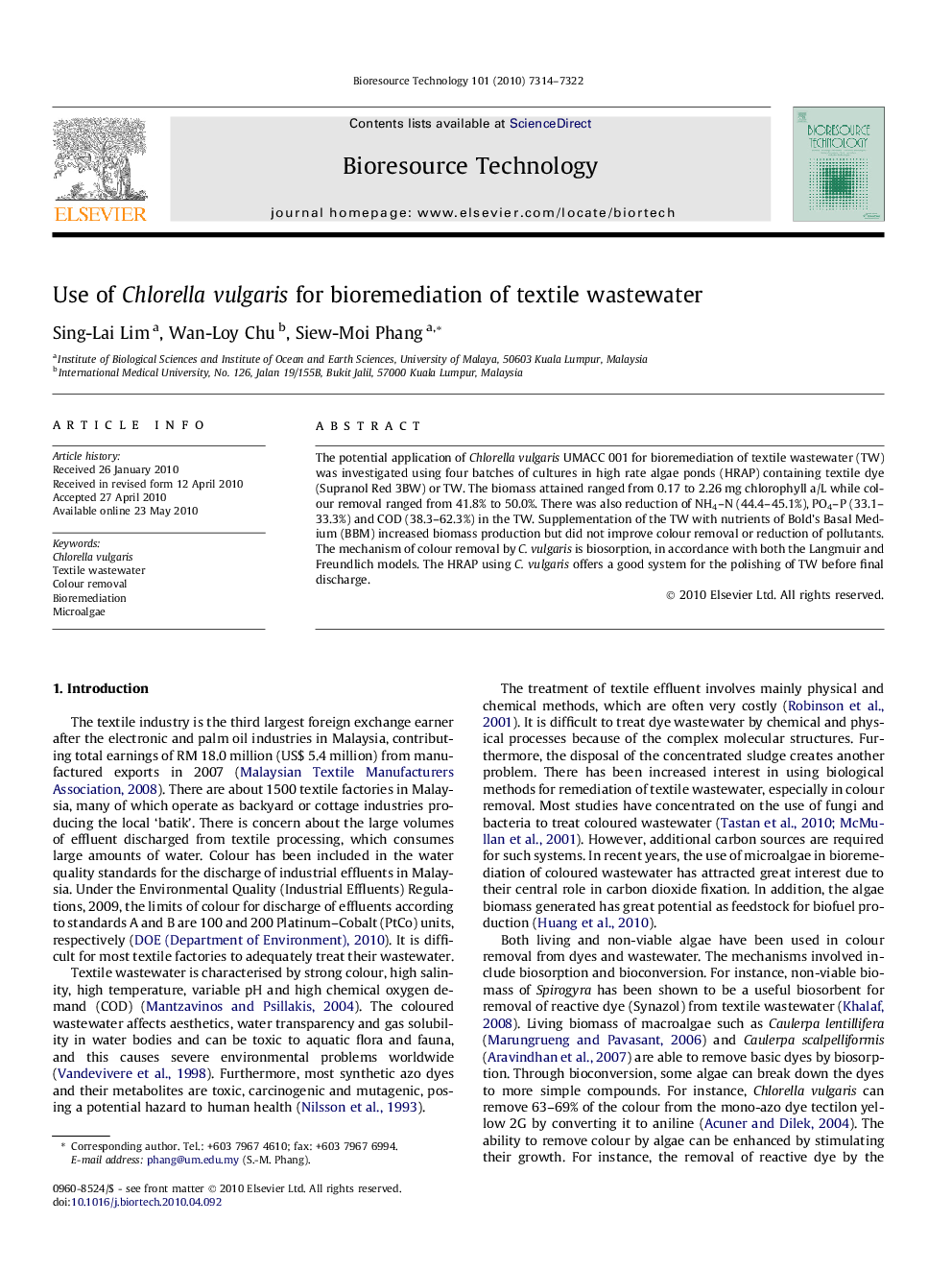| Article ID | Journal | Published Year | Pages | File Type |
|---|---|---|---|---|
| 682816 | Bioresource Technology | 2010 | 9 Pages |
Abstract
The potential application of Chlorella vulgaris UMACC 001 for bioremediation of textile wastewater (TW) was investigated using four batches of cultures in high rate algae ponds (HRAP) containing textile dye (Supranol Red 3BW) or TW. The biomass attained ranged from 0.17 to 2.26Â mg chlorophyll a/L while colour removal ranged from 41.8% to 50.0%. There was also reduction of NH4-N (44.4-45.1%), PO4-P (33.1-33.3%) and COD (38.3-62.3%) in the TW. Supplementation of the TW with nutrients of Bold's Basal Medium (BBM) increased biomass production but did not improve colour removal or reduction of pollutants. The mechanism of colour removal by C. vulgaris is biosorption, in accordance with both the Langmuir and Freundlich models. The HRAP using C. vulgaris offers a good system for the polishing of TW before final discharge.
Related Topics
Physical Sciences and Engineering
Chemical Engineering
Process Chemistry and Technology
Authors
Sing-Lai Lim, Wan-Loy Chu, Siew-Moi Phang,
